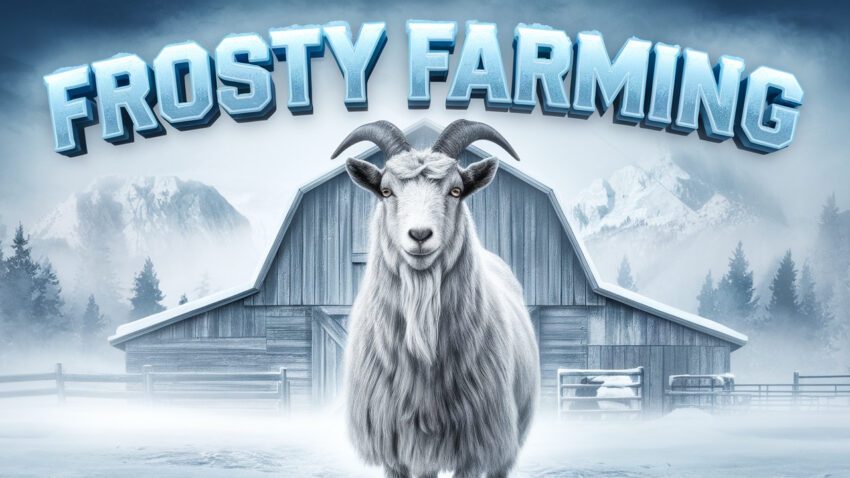Goat farming in cold spots needs a special touch. The right breeds and care are key to a successful farm. This way, you can make your farm both thriving and sustainable.
Goat farming in the cold needs a lot of planning. You must pick the right breeds and give them good shelter and food. With the right tips, you can beat the challenges and find success.
Key Takeaways
- Goat farming in cold regions of the world requires careful planning and attention to detail.
- Selecting cold-hardy goat breeds is crucial for success in cold climates.
- Providing proper shelter and nutrition is essential for the health and well-being of goats in cold regions.
- Understanding the unique challenges and opportunities of goat farming in cold regions is key to creating a thriving and sustainable operation.
- With the right preparations and strategies, goat farming in cold regions can be a rewarding and profitable experience.
Essential Cold Weather Preparations for Goat Farming
As winter gets closer, it’s key to get your goat farm ready. You need to pick cold-hardy goat breeds that can handle the cold. This is a big step to keep your goats healthy and productive.
It’s also crucial to make sure your goat shelter is up to the task. It should be well-insulated and protect from wind and snow. This keeps your goats warm and dry, cutting down on illness and stress. Plus, you need a winter feeding strategy that meets their higher nutritional needs during the cold.
Some important steps for winter prep include:
- Picking goat breeds like Boer or Kiko that fit your climate
- Improving your goat shelter to keep them warm and dry
- Creating a winter feeding plan with good hay, grains, and supplements
- Setting up water systems that won’t freeze, like heated buckets or insulated pipes
By following these steps, you can keep your goats healthy and productive, even in the coldest months. Always put your goats’ needs first and be ready for the cold weather challenges.
| Goat Breed | Cold Hardiness | Special Considerations |
|---|---|---|
| Boer | High | Needs good shelter and food to do well in the cold |
| Kiko | High | Good for cold climates, but might need extra food to stay healthy |
Goat Farming in Cold Regions of the World: Challenges and Solutions
Goat farming in cold areas faces special cold region farming challenges. These include managing frozen water systems and dealing with harsh weather. It’s crucial to understand these challenges and find effective solutions.
Research on goat productivity in high temperatures offers insights. It suggests ways to reduce methane emissions, like changing diets and using biotechnology. These methods can also help with cold region farming challenges and frozen water systems.
Some ways to tackle these issues include:
- Building weather-resistant shelters for goats
- Creating a winter feeding plan that meets goats’ cold weather needs
- Using insulated pipes and heaters to keep water systems from freezing
Goat farmers in cold areas can succeed by using proven strategies and technology. They should invest in research to improve goat resilience and productivity. Also, they should follow best practices for managing frozen water systems and other key infrastructure.
Conclusion: Making Your Cold Region Goat Farm Thrive
With the right approach, your cold region goat farm can thrive. Choose cold-hardy goat breeds and build weatherproof shelters. Use smart winter feeding methods and manage water systems well.
Learn from successful cold climate goat farms worldwide. Their success can guide you. Understanding your goats’ needs is key. Addressing challenges proactively is crucial.
With dedication and innovation, you can make your goat farm flourish. Even in harsh environments, a thriving farm is possible.
FAQ
What are the key considerations for selecting cold-hardy goat breeds?
Choosing the right goat breed for cold climates is key. Look for breeds like Pygmy, Boer, and Kiko goats. They have thick coats and can handle the cold.
How do I build weather-appropriate shelter for my goats in cold climates?
Goats need good shelter from the cold. Your shelter should be warm, windproof, and big enough for all. Think about a barn or a shed with a wind wall.
What winter feeding strategies should I implement for my cold-climate goat farm?
Goats need more food to stay warm in the cold. Give them more hay, grain, and good forage. Also, make sure they have minerals and vitamins all winter.
How do I set up water systems that won’t freeze in cold weather?
Keeping water from freezing is hard in the cold. Use heated buckets, insulate lines, or try a solar water heater. These can keep water from freezing.
What are some common challenges faced by goat farmers in cold regions?
Goat farmers in the cold face many challenges. They deal with frozen water, snow, and keeping goats healthy. It’s also hard to feed them right and find good shelter.
How can I overcome the challenges of goat farming in cold regions?
Goat farmers can beat the cold with smart planning. Choose the right breeds, build good shelters, and plan their food and water. With the right steps, you can succeed even in the coldest places.
